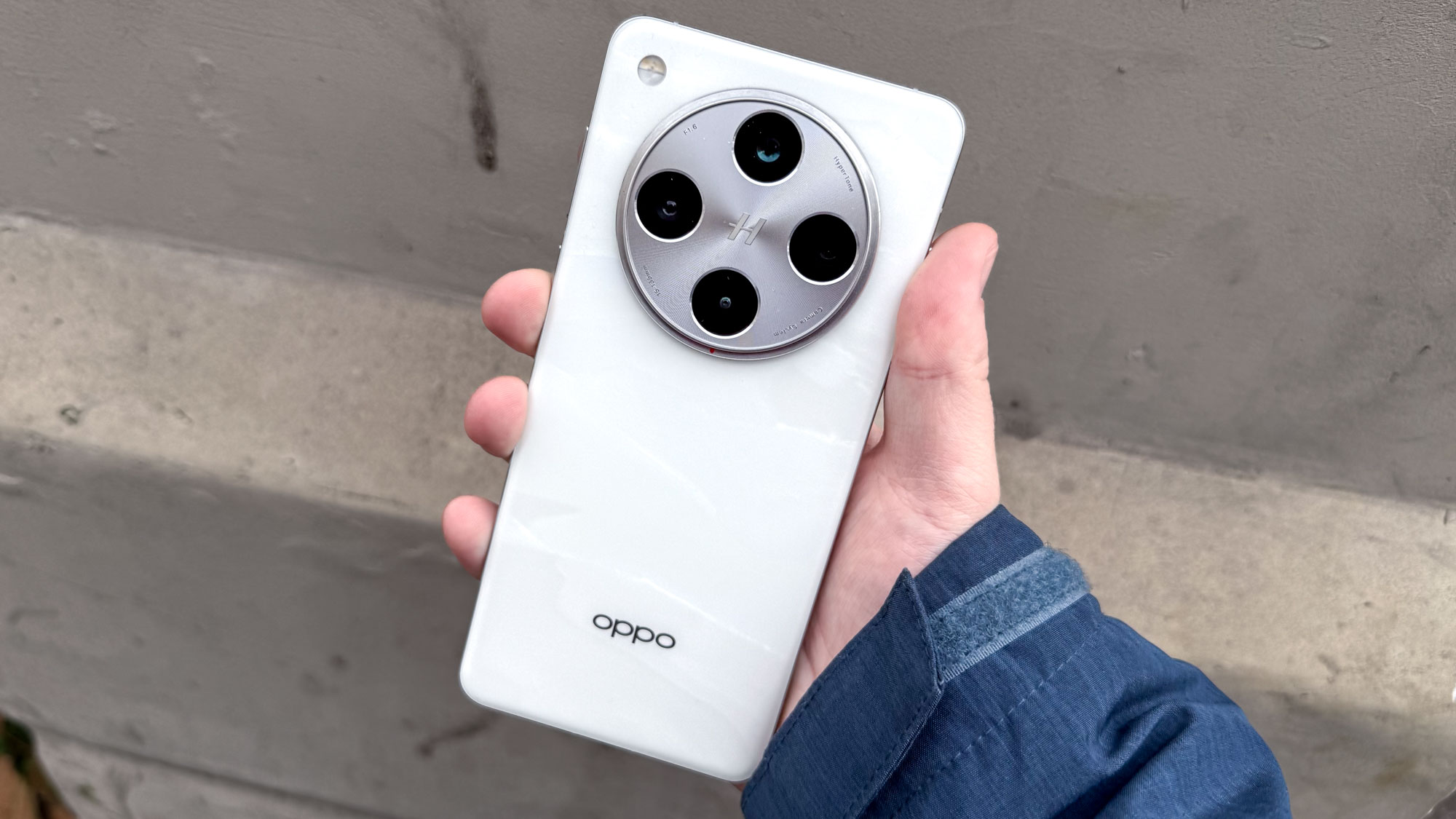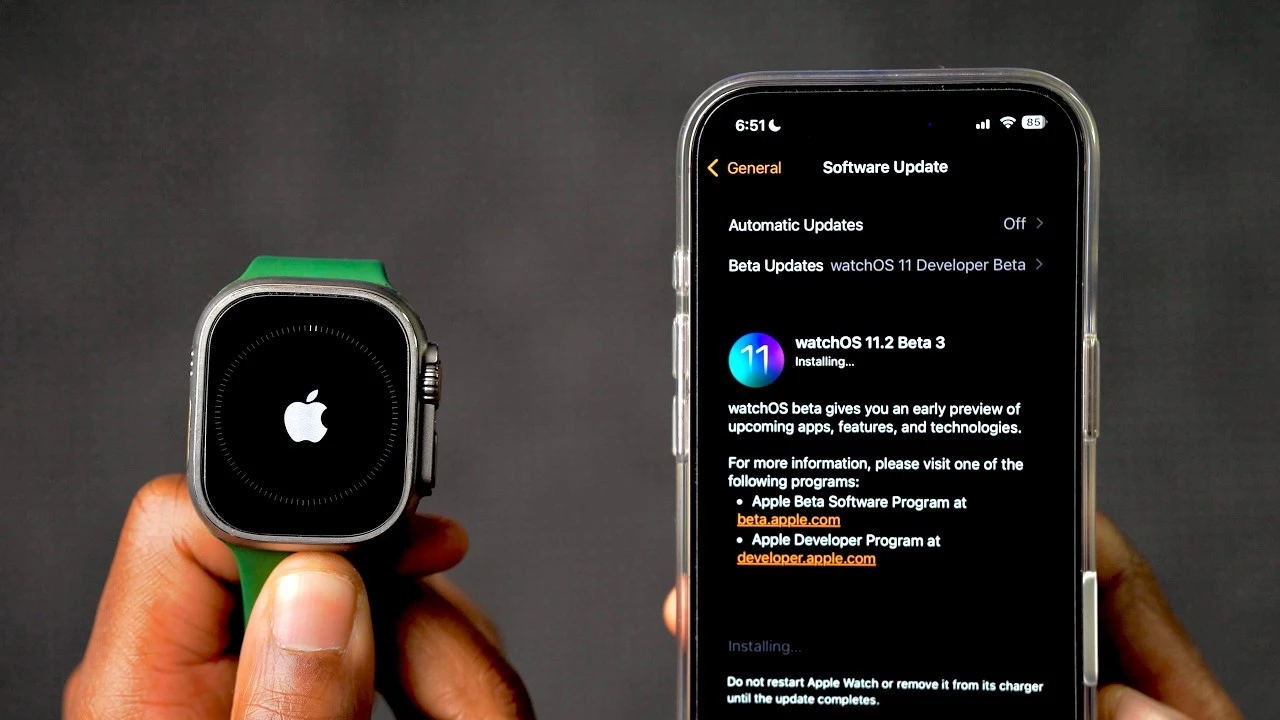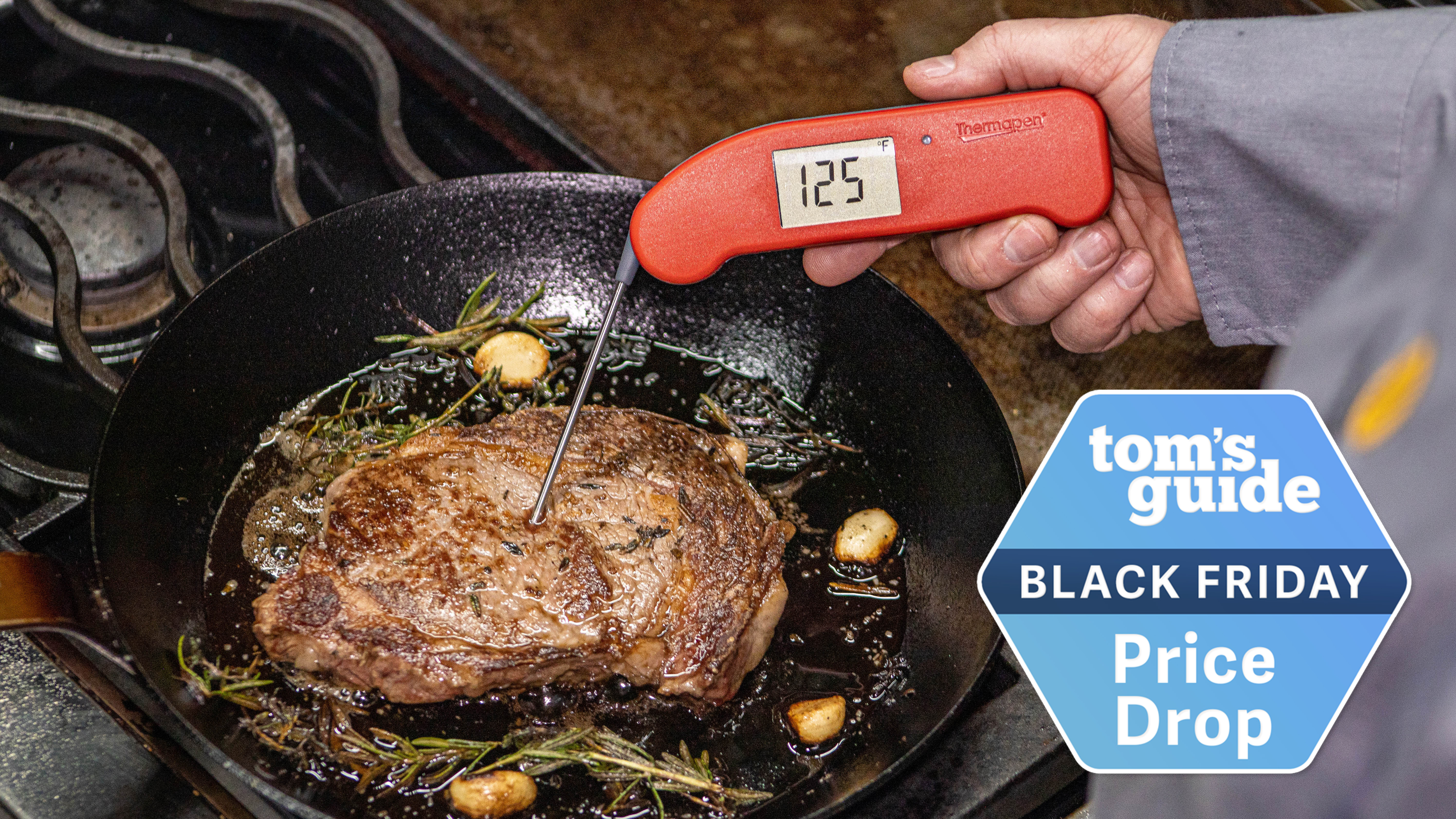
The Oppo Find X8 Pro has emerged as a late-2024 surprise that could keep Google, Samsung, Apple and the like on their toes well into 2025. And I couldn't be happier that this is the case. Newly returned to the global market — though sadly, not to the U.
S. — Oppo and its Find X8 Pro could offer us a taste of what the OnePlus 13 will offer when its global launch occurs early next year. (Oppo and OnePlus are owned by the same company with their top models sharing a lot in common.
) Still, there are some obvious differences that set the Oppo apart from its smartphone cousin, not to mention many rivals, such as four rear cameras, a huge battery, a big and bright display and a price that surprises in a good way. If it's available to buy where you are, the Find X8 Pro should be on your shortlist alongside any of the best phones from Samsung and OnePlus — and maybe even Apple if you're flexible about your choice of OS. The value that Oppo has stuffed into this phone has astonished me; even better, I have barely any complaints about how it all comes together with this phone.
I promise I'm not overhyping this phone, and after reading my Oppo Find X8 Pro review, I'm sure you'll see why. Oppo Find X8 Pro review: Specs Oppo Find X8 Pro: Price and availability The Find X8 Pro goes on sale November 21, initially via Oppo's own web store and via carrier O2. The cost of the single 16GB/512GB version is £1,049, an aggressive price that makes it cheaper than the Google Pixel 9 Pro XL (£1,100) and Samsung Galaxy S24 Ultra (£1,250) in the U.
K, although you can still pick up a OnePlus 12 (£849) for less. The price is only in pounds because Oppo doesn't sell in the U.S.
, even if it does cover much of the rest of the world. Americans who are jealous can still order the Find X8 in from abroad via various online stores, or wait for the OnePlus 13, which is likely to have similar if not identical specs. Oppo Find X8 Pro review: Design and display You can see how the design of Oppo and OnePlus phones have converged to the sleek-looking design with a round camera block as we see on the Find X8 Pro here.
But changes have still been made from earlier models. The camera bump has been flattened out to make it less likely to catch on your pockets. Oppo has also gone for a quad-curved display to make it slightly more comfortable to hold both vertically and horizontally, though the side rails remain fairly flat to match the current trend seen on other flagship phones.
The screen itself measures 6.78 inches and offers a resolution between the typical FHD and QHD standards other phones stick to. Like other flagship in its class, the Oppo Find X8 Pro features a screen with an adaptive refresh rate that scales between 1Hz and 120Hz.
Oppo also promises a peak brightness of an impressive 4,500 nits maximum. We didn't get the opportunity to test the Find X8 in our lab, but anecdotally I think the Google Pixel 9 Pro XL remains the brightest phone available. The Oppo Find X8 Pro did outshine the Galaxy S24 Ultra to my eye, even with the Samsung's Extra Brightness mode enabled.
Oppo has also borrowed the alert slider from OnePlus phones to use on the Find X8 series. This standard/vibrate/silent toggle is very useful to have alongside the regular Android Quick Settings version. I did find myself accidentally switching modes when taking the phone in and out of my pocket, though — something I've never experienced with OnePlus phones' sliders.
There's also another addition to the side of the Find X8 Pro in the form of the Quick button, effectively a simplified version of the iPhone 16's Camera Control . It's fully haptic, with no physical button like the Camera Control, and while it still acts as a camera shortcut and shutter button as you'd expect, its other functions are limited to adjusting zoom levels with swipes, or taking burst photos if you hold the button down. There's far less functionality to be found here than with Apple's Camera Control, but I think Oppo's approach might be better for the majority of users the majority of the time.
Oppo is touting its use of a toughened glass display and aluminum rails for the Find X8 Pro, but it doesn't explain exactly what's new or what standard these meet. What we do know however is that this phone features both IP68 and IP69 dust/water protection. IP68 ratings are common among flagship phones, and mean that the phone's been tested for water resistance by submerging it at least 3 feet 3 inches in fresh water for at least 30 minutes.
IP69 meanwhile means the device can shrug off high-pressure water jets, heated to 176 degrees Fahrenheit. It's a level of resistance you're unlikely to need in everyday life, but it could help save your phone in a freak disaster situation. The last thing to mention here are the color choices for the Oppo Find X8 Pro.
There are only two: the sensible option of Space Black, or the more eye-catching Pearl White you see in our photos. The unique coating that Oppo uses for Pearl White apparently never makes the same pattern twice, so you can feel a little bit more special owning this particular model. Oppo Find X8 Pro review: Cameras Oppo managed to stuff four cameras into the back of the Find X8 Pro, rivalling the Galaxy S24 Ultra.
While Oppo can't match the huge 200MP max resolution of the S24 Ultra's main camera, it can instead boast that all four of the Find X8 Pro's cameras are 50MP in resolution. In theory, that should make for more consistent photos across the zoom range. Speaking of zoom, the Find X8 Pro offers 3x and 6x optical zoom, with a max magnification of 120x.
There's an AI Telescope Zoom feature on top of that, but we'll explore this more later. Starting with the main camera, we see that compared to the iPhone 16 Pro Max , the Oppo Find X8 Pro tends toward the more dramatic, with darker shadows and brighter highlights. It's visible all over these photos of this vintage car/ice cream truck.
Against the Pixel 9 Pro XL, the Oppo Find X8 Pro also exaggerates the darkest and brightest areas of this statues of two bears. The Pixel's interpretation of the scene is much closer to how I saw it, but I don't think the Oppo version looks worse — just different. Sticking with the Pixel 9 Pro XL for an ultrawide comparison of a church, the Oppo shows off much more detail, despite the images having almost identical resolutions.
The dark/light balance difference I pointed out before applies here, too, if you look at the sky or the shadowed doorways. Now it's time for a series of zoom comparisons against the Galaxy S24 Ultra, which like the Find X8 Pro uses two telephoto cameras. In this initial 3x face-off looking across Paddington Station's rooves, the S24 Ultra takes the lead because of its coloration.
At 5x/6x, there's less of a difference. I still like the Galaxy S24 Ultra's color treatment of the scene, but the Find X8 Pro is picking up slightly more detail in the buildings. Normally I don't test cameras phones' digital zoom features, since it's invariably just a worse, cropped-in version of their highest magnification camera.
But Oppo claims that its new AI Telescope Zoom helps bring clarity to photos zoomed in over 10x and higher, even up to 60x and above. So I zoomed right into the GWR logo to test it. The Galaxy S24 Ultra's version of this shot is pretty clear, but it's quite soft in terms of detail.
While there's a bit more noise in the shot from the Find X8 Pro, the clarity difference is staggering. Its colors are much more accurate to the scene too, with the Samsung making things look way too yellow. I also checked how the Find X8 Pro performed at night with its low-light camera mode against the Pixel and the iPhone, This garden shot between the Oppo and Apple phones shows the Find X8 Pro's superior ability to deal with extreme lighting, competently balancing the flare from the solar light and the shadows of the trees and bushes.
The iPhone image is brighter, which helps bring out detail from the darker areas, but also makes the better-lit portions of the photo overexposed. The Oppo's preference for extreme contrast is shown off most clearly in this shot of statues near Paddington Station at night. It's a moody-looking shot of these banqueting animals for sure, but the Pixel 9 Pro XL reveals so much more detail, sacrificing the legibility of the glowing clock in the background but allowing us to see much more of our subjects.
We'll finish up with a portrait selfie comparison, again between the Oppo and the Samsung. The Find X8 Pro's done a lot better than I expected here, offering a flattering but more natural pink hue to my selfie rather than the yellower tone of the Galaxy S24 Ultra. The Oppo also cuts around me and my glasses to apply the bokeh effect near-perfectly, something I can normally only rely on the Samsung phone to do consistently.
One other point in favor of the Find X8 Pro's photography is its minimal shutter lag. The camera remains fast and responsive even if you're hammering the shutter button in the hope of capturing a fast-moving object or a fleeting expression on your subject's face. Oppo Find X8 Pro review: Performance Oppo selected MediaTek's Dimensity 9400 chip to drive the Find X8 series, eschewing the Snapdragon 8 Elite that we expect many of the best Android phones will adopt over the coming year.
In the Pro model we have here, it comes with 16GB RAM and 512GB storage, a strong default spec compared to the 12GB/256GB many Android flagships come with. Our test results make for interesting reading, with the Find X8 Pro outperforming all its rivals on the Wild Life Extreme Unlimited GPU test, including the iPhone 16 Pro Max's mighty A18 Pro chip and the Asus ROG Phone 9 Pro running the latest Snapdragon 8 Elite silicon at full power. The Dimensity chip is also competitive in the Geekbench CPU benchmarks, beating the iPhone in the multicore test and the Snapdragon 8 Gen 3-powered OnePlus 12 on both single and multicore tests.
It lags behind the iPhone when it comes to transcoding a video with Adobe Premiere Rush, though. Oppo Find X8 Pro review: Battery and charging Despite being a similar size to its rivals, the Oppo Find X8 Pro contains a 5,910 mAh battery, using a more compact silicon-carbon material rather than the usual lithium-ion that other batteries rely on. The result is a huge capacity compared to the 5,000 mAh cell inside the Galaxy S24 Ultra, and a decent chunk more than the OnePlus 12's 5,500 mAh power pack, too.
In my own testing, the Find X8 Pro lost 14% charge after 3 hours of YouTube over Wi-Fi. In that same time, he Pixel 9 Pro XL drains 15%, the Galaxy S24 Ultra 21% and the OnePlus 12 18%, so the larger battery has paid off for Oppo, but perhaps not as much as expected. For power, Oppo's using an 80W SuperVOOC wired standard for the Find X8 Pro, but it can also charge at up to 55W via USB PowerDelivery, meaning you still get good speeds even if you don't have an Oppo-made charger.
There's also 50W AirVOOC wireless charging on offer if you buy the correct charging stand or one of Oppo's new Mag Charge cases, which enable a MagSafe-style magnetically-aligned puck to easily connect to the phone to begin refueling. Oppo sent us a Find X8 Pro with a SuperVOOC charger in the box, although this apparently isn't standard worldwide. After plugging in the Oppo at 0% charge, the brick powered the phone back to 46% full after 15 minutes, 81% after half-an-hour and 100% at the 48-minute mark.
That's not quite as fast as the OnePlus 12's sub-30-minutes full refill time, but we can forgive that considering the extra capacity the Oppo has to fill up. Oppo Find X8 Pro review: Software and special features The Find X8 Pro runs on the Android 15-based ColorOS 15, which offers five years of full updates and six years of security updates. That's behind the seven years offered by Google and Samsung for their latest phones, but perhaps that won't matter to you if you intend to upgrade your phone again before then.
One of the most interesting upgrades made to the Oppo Find X8 Pro is it can now share files with iPhones more directly. A new Share with iPhone option can be found when opening the sharing menu for a given item, and iPhone users can install the O+ Connect app to accept them. This works by setting up a temporary Wi-Fi hotspot for the iPhone to connect to, and it works effectively.
That said, it's not that much easier than just sending files by a cloud folder or through a messaging app. In keeping with modern trends, Oppo has bundled up some new AI features for the Find X8 Pro to use. All of these capabilities are in line with what we've seen rival phones offer — summarization, translation, audio transcription, text generation and photo editing tools are all present, as is Google Gemini as the default digital assistant, plus Circle to Search.
These tools all work to varying levels of effectiveness, due to the inconsistent nature of generative AI. What I will praise Oppo for is the option to access relevant AI tools from a toolbar you can summon by swiping in from the side of the screen. It keeps the features accessible without permanently taking up screen space in the interface; the toolbar also does its best to suggest the most likely tool you'll need rather than letting you swipe through all of them every time.
Oppo Find X8 Pro review: Verdict I'd happily recommend the Oppo Find X8 Pro to anyone who wants a well-balanced flagship phone. The Find X8 Pro might be harder to find in the United States, and its software update schedule is shorter than the best in the business, but everywhere else, this phone is top-tier. Having four cameras on a phone that has a more typical flagship phone price rather than an "ultra" one is remarkable.
A battery that's nearly 20% bigger than major rivals, a handsome-looking screen, and competitive benchmark results only reinforce what value you'll gain with the Find X8 Pro. Oppo may have left it a little late in 2024 to launch the Find X8 Pro, but it's a phone of the year contender that could continue to be a thorn in the side of Apple, Samsung and Google well into next year depending on how those companies develop their premium phone offerings. I had feared that the Find X8 Pro and the incoming OnePlus 13 would end up clashing, but from the specs we've seen after the OnePlus 13 launch in China, that may not end up happening.
It looks like OnePlus' new product is going to remain an amazing deal for users who want a standard flagship phone, while Oppo will undercut and outperform Pro and Ultra models from other phone makers. All Oppo needs to do is bring the Find X8 Pro to U.S.
carriers for easier purchasing, and the stage will be set for a real smartphone showdown..














